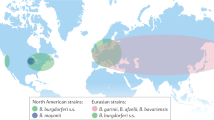Abstract.
Lyme disease is a multisystem illness initiated upon infection with the spirochete Borrelia burgdorferi. Whereas the majority of patients who develop Lyme arthritis may be successfully treated with antibiotic therapy, about 10% go on to develop arthritis which persists for months to years, despite antibiotic therapy. Development of what we have termed treatment-resistant Lyme arthritis has previously been associated with both the presence of particular major histocompatibility complex class II alleles and immunoreactivity to the spriochetal outer surface protein A (OspA). Recently, we showed that patients with treatment-resistant Lyme arthritis, but not patients with other forms of arthritis, generate synovial fluid T cell responses to an immunodominant epitope of OspA and a highly homologous region of the human-lymphocyte-function-associated antigen-1α L chain. Identification of a bacterial antigen capable of propagating an autoimmune response against a self-antigen provides a model of molecular mimicry in the pathogenesis of treatment-resistant Lyme arthritis.
Similar content being viewed by others
Author information
Authors and Affiliations
Additional information
Received 21 December 1999; received after revision 10 April 2000; accepted 11 April 2000
Rights and permissions
About this article
Cite this article
Gross, D., Huber, B. Cellular and molecular aspects of Lyme arthritis. CMLS, Cell. Mol. Life Sci. 57, 1562–1569 (2000). https://doi.org/10.1007/PL00000641
Issue Date:
DOI: https://doi.org/10.1007/PL00000641




